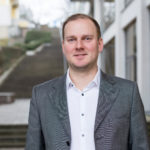Mathematics and Applications
Mathematics and Applications
The research in mathematics and applications includes mathematics, physics, mathematical statistics and applied mathematics.
The research topic plays a key role in meeting our societal and sustainability challenges because it illuminates fundamental questions that are central to the theoretical understanding and construction of complex systems.
Within mathematics and applications, in-depth theoretical research in algebra, astrophysics, geometry and nonlinear dynamics is interspersed with strongly applied research with a focus on population studies in the field of health, as well as modeling of traffic networks. Mathematical modeling forms the core of the two latter sub-areas.
Our research is conducted in collaboration with organisations from the surrounding community. Some examples of cooperation partners are Region Blekinge, County Council Blekinge and the Swedish Transport Administration.
We have also collaborations with other universities, both in Sweden and abroad. Some examples are University Väst, Linköping University, Mälardalen University and Universidade Federal de Santa Catarina in Brazil.
Examples of different research projects are:
- Data-driven analysis of travel times.
- Epsilon-strongly graded algebras.
- Hom-associative and non-associative Ore expansions.
- Modeling and optimization of systems.
- Material dynamics.
- Optimal quantum transport.
- SNAC (Swedish National Study on Aging and Care) – national research study.
- Spectral analysis of distant stars
Funders for our research projects are, among others, the Carl Trygger Foundation, the Crafoord Foundation, the Royal Swedish Academy of Sciences, the Swedish Transport Administration and the Swedish Transport Agency.
Research in mathematics and applications is mainly conducted at the Department of Mathematics and Natural Sciences.
Noncommutative Riemannian spin geometry from a bundle theoretic point of view
Riemannian spin geometry is a special and important topic within differential geometry which is mainly based on principal bundle theory and has objects such as spin structures and Dirac operators. It also has wide applications to mathematical physics, in particular to quantum field theory, where spin structures are an essential ingredient in the definition of any theory with uncharged fermions. In the noncommutative setting the notion of a spectral triple provides a natural framework for noncommutative Riemannian spin geometry.
However, unlike in the classical setting, the axiomatic description of a noncommutative Riemannian spin geometry does not incorporate noncommutative principal bundles. The purpose of the research project is to give a novel perspective on noncommutative Riemannian spin geometry by systematically developing and studying the key constructions and ideas of Riemannian spin geometry within the framework of noncommutative principal bundles.
Contact person: Stefan Wagner
The algebraic structure of graded algebras
This is a project within the research field of noncommutative algebra.
Graded algebras appear naturally in mathematics and in e.g. physics. In this project we aim to reach a better understanding of the algebraic structure of algebras graded by groups, inverse semigroups, groupoids etc.
Natural examples of such algebras are e.g. matrix algebras, Leavitt path algebras, group rings, groupoid rings, Steinberg algebras, skew group rings, partial skew groupoid rings, and various rings associated with dynamical systems.
Contact person: Johan Öinert
Combinatorial optimisation – for parallel computer systems and codes
Mathematical problems occur in many different contexts. One is when you are trying to get a parallel computer to function as efficiently as possible. If you were to solve these mathematical problems, it would mean that you have very clear boundaries for your computer, allowing it to become optimally efficient.
The same applies to coding theory. When we send text messages between one mobile phone to another, the signals are subjected to interference. However, by using efficient codes, the message can be reconstructed to what was originally sent. In order to optimise this process, you need to solve specific mathematical problems.
Contact person: Håkan Lennerstad
Contact
 Professor Johan Öinert
Professor Johan Öinert
Head of subject, mathematics and applications
E-mail: johan.oinert@bth.se
Telephone: + 455-38 56 84